There are few brands that can lay claim to such an illustrious history in gravel cycling like Salsa. The Warbird is undoubtedly the bike that kickstarted the ‘fast gravel’ trend and remains the blueprint for many gravel bikes today. Now in its fourth generation, the Salsa Warbird continues to evolve with the rapidly changing pace of the gravel genre.
The story of the Warbird is as long as the Minnesota gravel roads which it was designed to rule. From the earliest prototype of 2009 to the present day, it’s almost as old as gravel itself. Head on over to Salsa’s website and indulge in this nostalgia fest if you have the time.
We’ve been testing the Warbird for three months through sun, rain, dirt and dust. For most of our tenure we have kept it absolutely stock. But in the interests of seeing how it’d perform, have tested a variety of wheelsets on its axles of both 700 and 650b sizes.
This particular bike has had a busy life since it arrived in the UK at the start of the year. Firstly it endured the harsh winter conditions of the Scottish borders for the excellent Pannier.cc Warbird feature by Tom Hill. Then, it went straight into a road trip touring dealers up down the country as a demo bike. It arrived at ADVNTR Towers looking a little bedraggled but after some fresh grease and TLC, was ready for more adventures in lockdown.
Without further ado, lets check out the details…
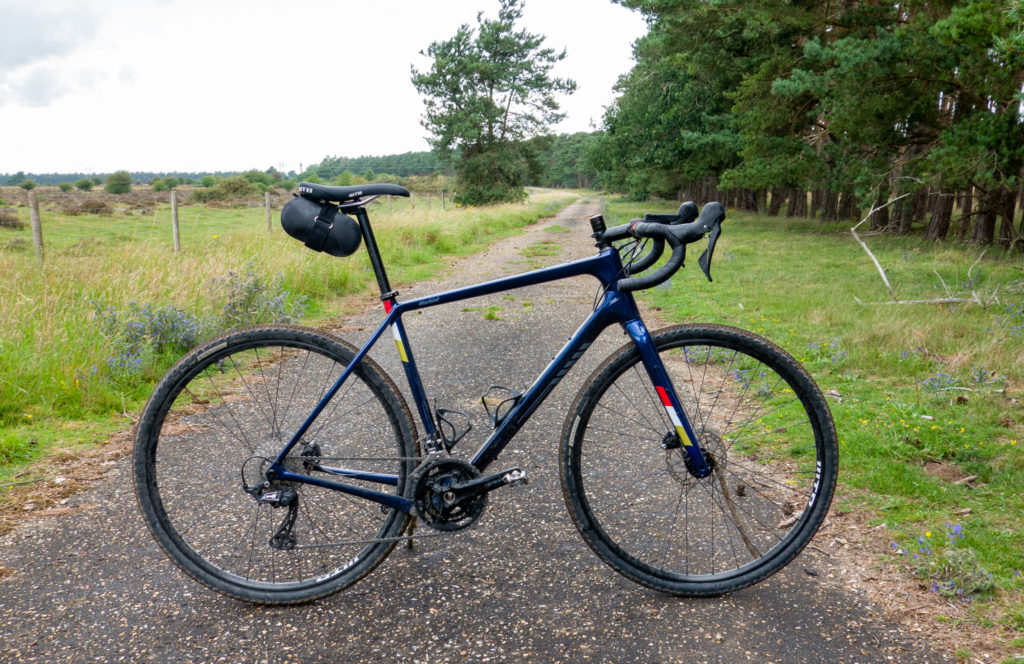
Salsa Warbird GRX 600 specifications
The Warbird sent over by UK distributor Lyon Cycle is the Shimano GRX 600 equipped model. Sitting somewhere in the middle of the four model range. There’s Shimano GRX 810 or Di2 if your pockets are deep, or an entry level SRAM Apex 1 model. Lyon are also bringing in a small number of framesets for those who want to fully customise their build.
The GRX 600 tag is a little misleading as it’s actually an eclectic mix of various GRX ranges. The front and rear mechs come from the 810 range, whereas the shifters and crankset are 600.
To cut costs (the irony of which we’ll come to later), brake callipers come from the GRX 400 parts bin. The stopping power is just as efficient as higher end Shimano anchors, they just weigh more than the fancier 810 stoppers.
Cockpit components are all functional if not astounding OEM Salsa kit. The standout being the Salsa Cowbell Deluxe handlebars with a comfortable 12° flare in the drops. These are nicely shaped for long days grinding the gravel of the Mid-South. Or the East Midlands for that matter.
A well padded WTB Volt saddle sits atop a Salsa Guide Deluxe seatpost. It’s short, stubby and more at home on a mountain bike. As is usually the case, I had to swap it out for something more forgiving to my posterior, but everyone’s butt is different.
WTB also make an appearance in the rolling stock for the Warbird GRX 600 with their STi 23 rims, laced to WTB Speedterra hubs. While not the lightest 700c wheelset in existence, these tubeless wheels have always proven reliable. Teravail Cannonball 700×42 tyres in the ‘durable’ casing are the finishing touch in a dependable spec list.
Salsa Warbird frame and fork – designed for the long haul
Whereas most brands have one, maybe two gravel bikes in their range, Salsa have an astounding 9 spanning the entire gravel spectrum. The Warbird is assigned the status of gravel racer in the lineup, which can be a little misleading. Whereas many ‘gravel racers’ such as Cervelo’s Aspero and the 3T Exploro are stiff, aero and eschew mounts in a quest for ultimate lightness, Salsa’s approach is more tortoise than hare. The Warbird is designed for endurance, efficiency and most of all, comfort.
Long, low and slack is the Salsa’s recipe for endurance. With a relaxed 70.75° head angle, long toptube and an even longer wheelbase (41.5″ on our 57.5 frame), it’s distinctly different to the typical ‘gravel racer’ which usually feature more than a passing nod to cyclocross geometry.
Compared to the stout tubes of most carbon frames, the Warbird is super skinny. I’ve surprised a couple of riding buddies who thought it was in fact aluminium! The broad curvature of the pencil thin seat stays are not just about stylistic flair, they’re there for comfort. Salsa call it Class 5 VRS (Vibration Reduction System), a hallmark feature of the brand also found on their Warrorad and Cutthroat models.
Max tyre widths for the Warbird are as expected for a bike focused on endurance. 45mm in 700c guise and 2.0″ for 650b. Salsa also spec the minimum tyre size as 700 x 32mm. Still popular with US gravel racers, but more useful us back in Blighty who may consider the Warbird for winter road duties too.
No need to pack light
With 3 bottle cage mounts within the main triangle (frame size 56 and above), a 4th under the downtube and 2 more on the fork, you’ll easily be triple figures into your ride before needing to stop and resupply. Being able to be totally self-sufficient has proved incredibly useful post-lockdown. I’ve made full use of all the mounts to lug around enough water that I’ve rarely needed to refill!
The carbon frame also features the now ubiquitous bento box mount on the top tube. There’s fully sleeved internal cable routing along with provision for a dropper post. Versatility continues with mudguard and rear rack mounts. And as is fitting for a bike designed for going A Long Way, the Salsa Waxwing fork has internal routing for a dynamo cable.
While on the subject of the fork, it surprised me to find an alloy steerer tube mentioned in the spec list. A quick drop of the forks from the frame revealed that it is no spec-sheet typo either. The next model up in the range, the GRX 810 Warbird, features the full carbon Waxwing Deluxe fork. It shaves a little weight of the alloy steerer version, but is otherwise the same.
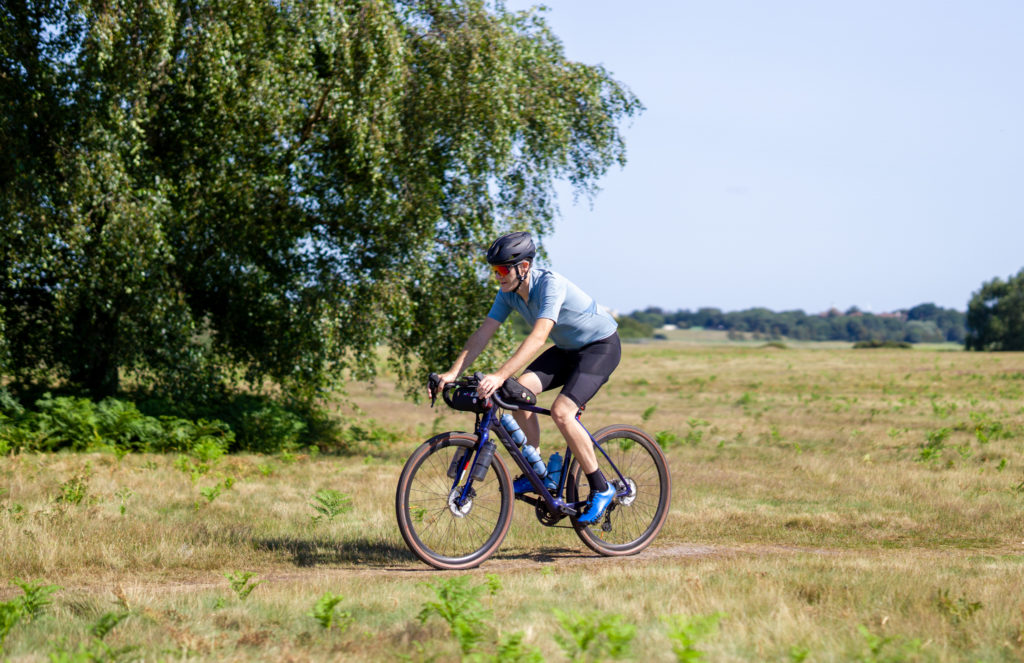
Salsa Warbird – Ride Experience
As pointed out already, the Salsa Warbird approaches the world of performance gravel bikes from a very different angle. The most refreshing aspect of which is that this isn’t a bike that punishes you with a bone crushing ride in the pursuit of performance. The ride is smooth and composed. Essentially, this is a bike designed in every sense for riding over many hours in comfort.
I’ve taken the Warbird on many a long ride over the test period. Heading out as the sun rises and getting back just as it sets. Yes, I’ve been beat up and exhausted, but no where near the levels of pain and weariness I’m used to. The Class-5 VRS seat stays are not suspension levels of springiness, but they do indeed contribute to the frame’s ability to dampen the ride and take the edge off rough trails. If you’re used to carbon frames being overly stiff, you’re in for a big surprise.
Many a gravel racer is sharp in steering response, darty and requiring your full attention, the Warbird is more relaxed. The best analogy I can use (and one from my obsession with cars) is that Warbird feels like a grand tourer compared to an all-out sports car. It has the performance in spades, it’s just a far nicer proposition to live with.

A bike for the wild open
The Salsa Warbird performs at its best on long, open gravel roads. The combination of relaxed frame angles and that long wheelbase exemplify the comfort cruising nature of the bike. Put your head down, crank out the revolutions and let the bike iron out the imperfections. It’s where the Warbird excels – not surprisingly, as it’s the terrain of many a USA gravel race. The Shimano GRX 2x configuration is perfectly suited – after I retuned into two chainring thinking again.
Point it down something tight and twisty and the Warbird’s length and lazy steering starts to get in a muddle. Mason’s Bokeh, with it’s rear wheel tucked up tight behind the seat tube, will leave the Salsa wondering which way it went. Our little chase along the twisting trails of Thetford Forest felt like a game of cat and mouse. Bokeh whizzing through tight corners and switchbacks, only to be reeled back in on the next fireroad straight.
A good excuse to put Salsa’s dual wheel compatibility to the test had just presented itself. Personally, I’ve never found much love for the smaller wheel size. My preference for hopping between quiet roads and long stretches of gravel track are more suited to a fast rolling 700. Back to the Warbird – dropping down to a set of 650b wheels shod with 47c WTB Venture tyres revealed a new personality to the Warbird. Now it felt more nimble, the steering a lot more direct and willing to turn, the tendency to understeer all but gone.
The handling transformation took more than a little time for me to get used to. Turning too sharply for a corner, having become accustomed to wrestling the Warbird into corners. Our game of cat and mouse just got a lot more even.
You can’t put a price on happiness
The quality of the frame is impressive and the glossy blue paint really makes the Salsa look like it’s expensive. Which is just as well, because there is no getting away from how much this bike costs. £3,400 is a lot of money when you sit and look at the specification sheet. The Giant Revolt Advanced 0 we reviewed recently puts this into stark contrast. The Giant is adorned with top spec carbon components and leaves you with £150 in your back pocket compared to the Warbird.
Our GRX 600 Warbird is the mid tier offering in the range. It’s all functional if uninspiring kit. But it pains to say that at this price, you really do expect more for your money. The seatpost in particular is the type of lead weight component you’d be surprised to find on even a bike half the price. It is also such a stout, rigid thing that it negates all the cosseting feel the VRS-5 seat stays provide.
In the grand scheme of things, Salsa are a small player. They’ll never have the buying powers of brands like Giant and are always going to lose in a battle of Spec List Top Trumps.
But… when both the Warbird and Giant Revolt were available to ride, it was always the blue Salsa I reached for. Looking beyond the build kit, this is one of the nicest riding bikes I’ve experienced. The sensible option in the Salsa Warbird range is the frameset at £2,100. You get the full carbon Waxwing Deluxe fork along with the freedom to build it your way. Sadly, it is only available in black.
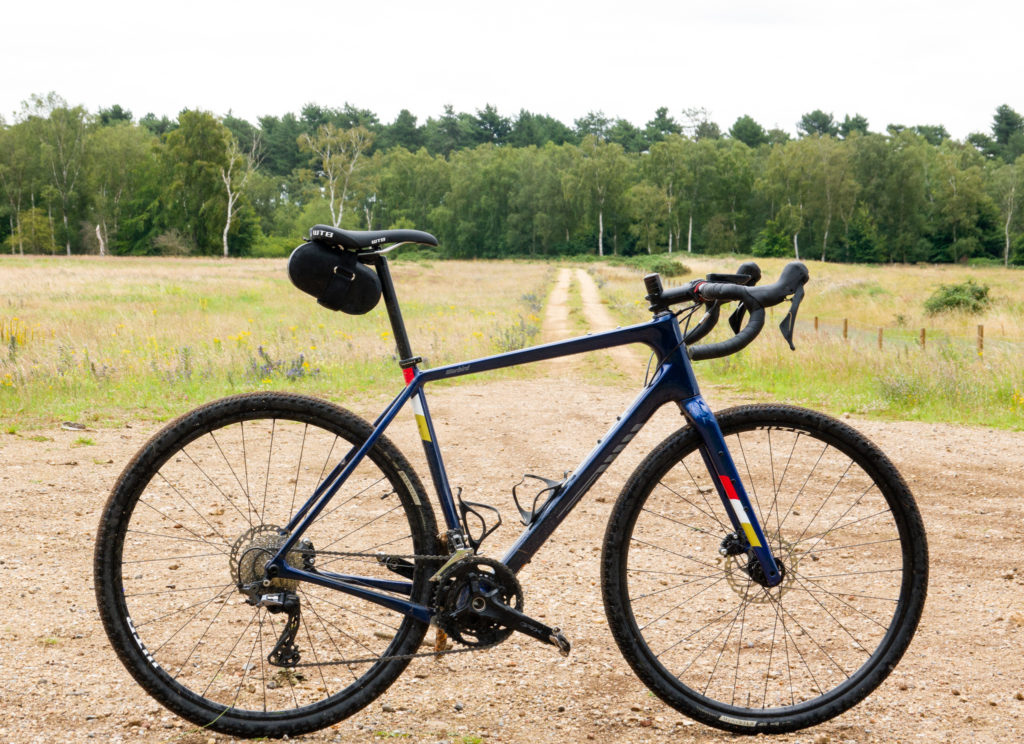
My verdict
For me, the Salsa Warbird has been the bike that defines what gravel riding means for me. Covering distance over multiple surfaces, quickly and comfortably. It doesn’t set out to be a genre busting bike, it’s the pinnacle of the true gravel bike.
Draw a ‘gravel scale’ with the long and slack Evil Chamois Hagar at the Psuedo MTB end. And the ‘road bike with big tyres’ Cervelo Aspero at the other… Slap bang in the middle, you’ll find the Salsa Warbird.
It’s not the perfect bike for everyone. Those looking for a more playful partner to rally around the woods will find it numb. While road cyclists wanting a bike to take them off the beaten track while still keeping pace on the Sunday club ride, will find it lacking in pace. The Warbird is honest to its roots and remains the true American gravel racer.
I’m doe-eyed in love with the Salsa Warbird, but the price is a real sticking point in this love affair. If this GRX600 model was on the right side of £3,000 then I’d be scoring it much higher. Justify your purchase with heart rather than brain and you’ll not be disappointed. Just remember, you’ll need to save up for a few upgrades before this bird can really fly.
Last modified: 6th August 2020
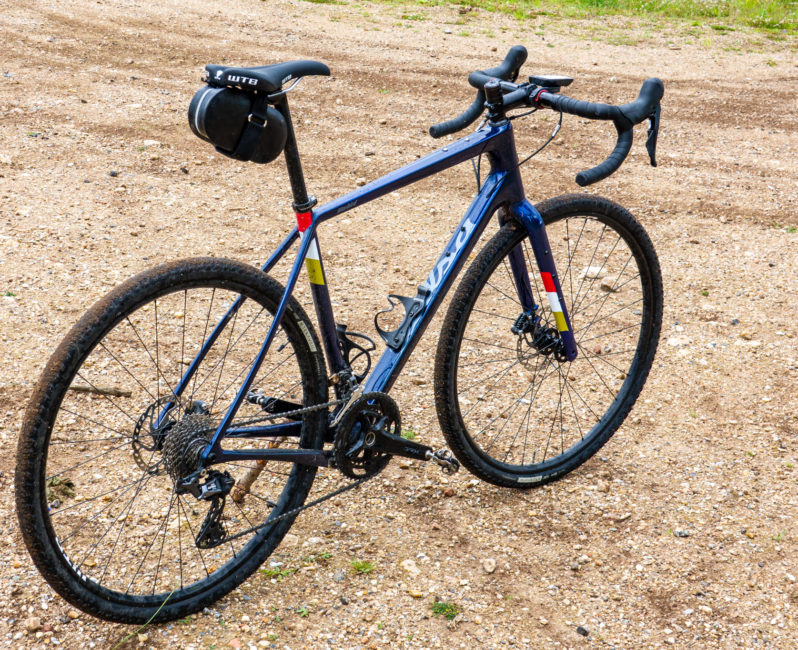
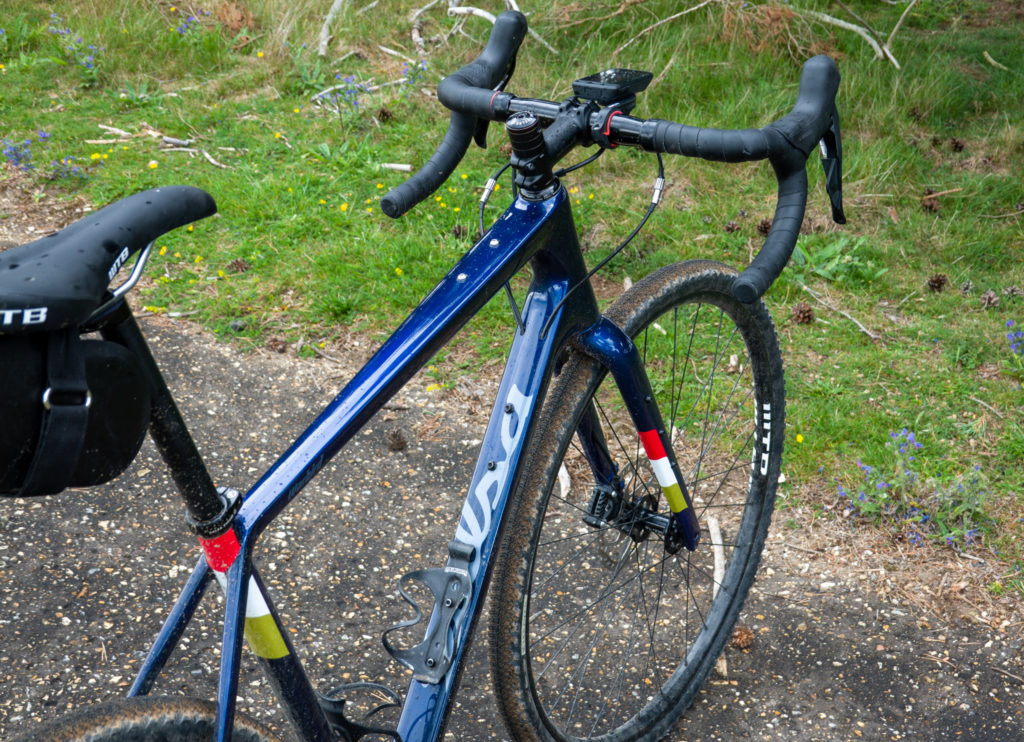


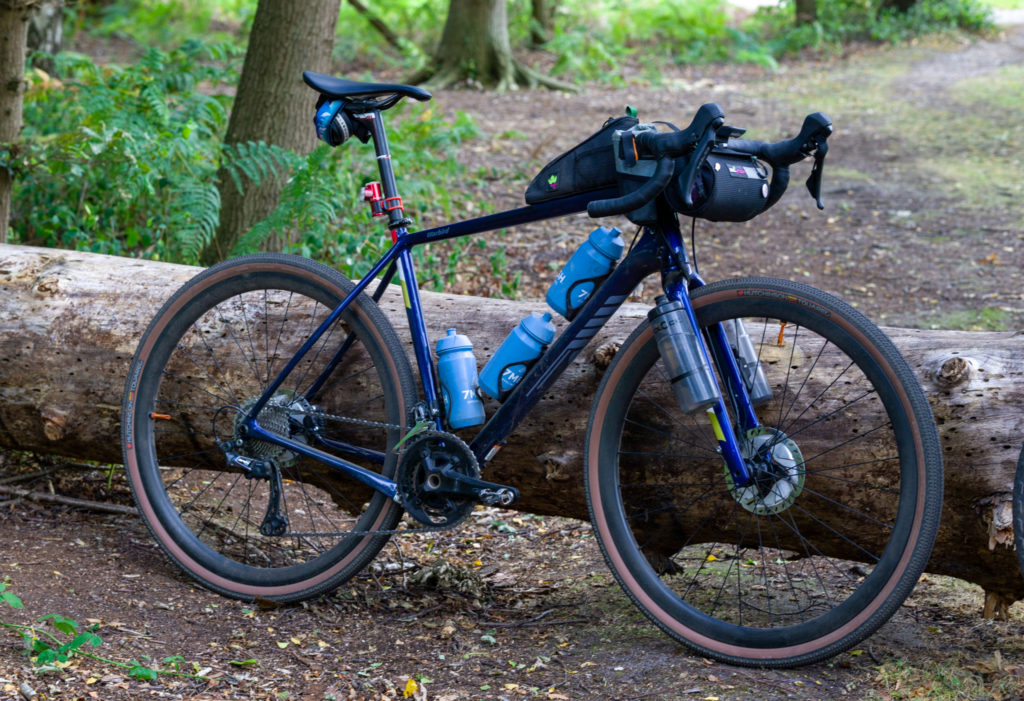
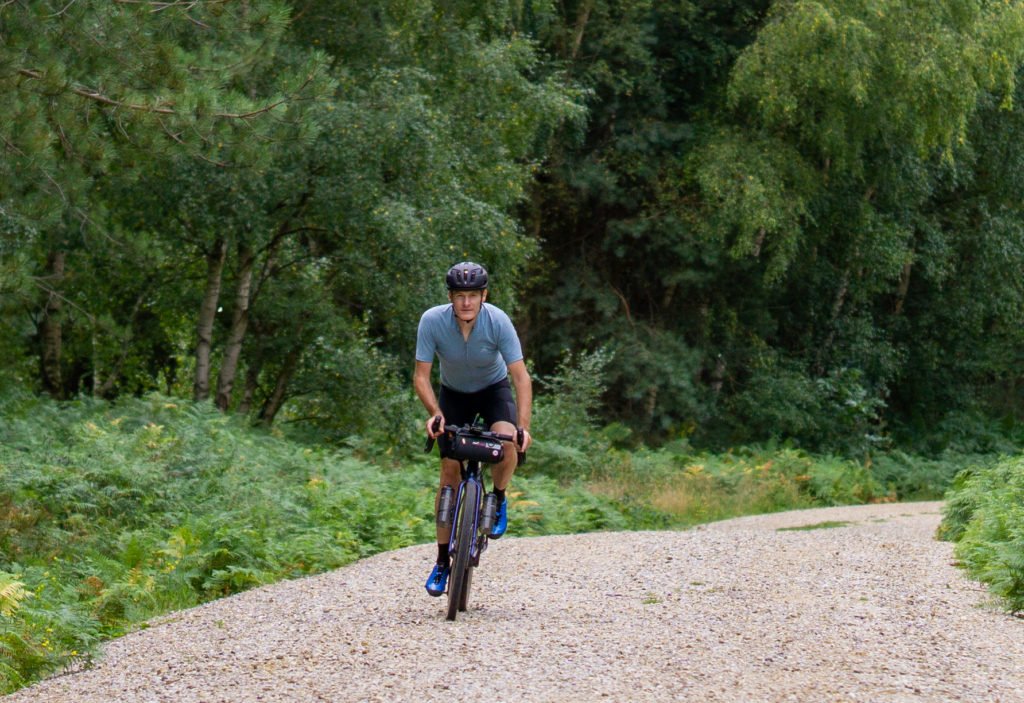
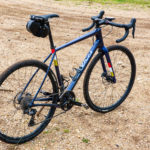
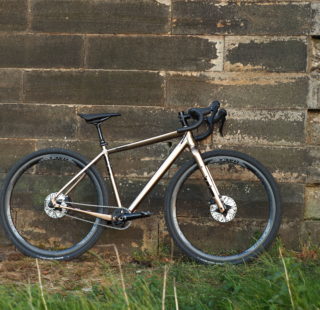
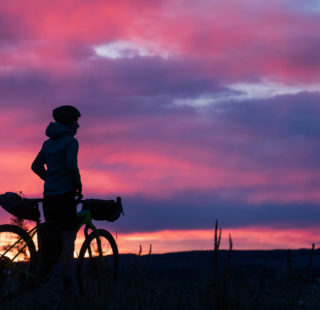
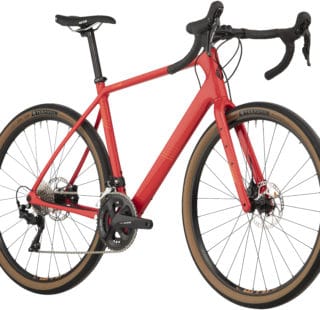
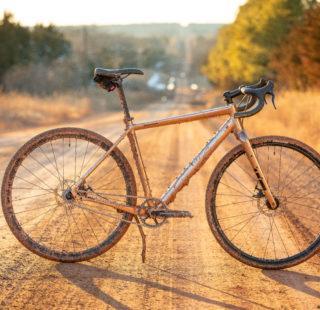


Nice review. Sadly to me all Salsa bike or frame are too pricey. I understand why but being of limited means I’d always have to look elsewhere. Not a fan of carbon frames now for eco reasons but for that reason and the price I’d be having a Bokeh any day of the week. Shame, love the look and mindset of so many Salsa bikes. Just don’t think they’re competitive in the UK.
It’s a wonderful bike to ride, but I totally agree with you on the prohibitive cost of the brand. I was at pain to mark the bike down, especially as a longtime Salsa fan, but our pockets ain’t that deep.
Having a poke around inside, the moulding is way better than a lot of carbon frames. But I’m sure many of us perceive Salsa as a premium brand in quite the same way as say 3T or Open – which could learn a thing or two by looking inside a Salsa!
What’s the seat pack in the pics?
It’s a Gordo, by Arundel.
I really rate it! https://advntr.cc/arundel-gordo-seat-bag/
How do you rate the warbird compared with the Bombtrack Hook Etx C in terms of ride? I’m wondering if the warbird with 650s is comparable to the bombtrack for twisting routes? and maybe how bombtrack handles 700s compared to warbird if you know?
The Bombtrack Etx-C has a significantly shorter front end, it’s going to ride differently, personally I won’t consider trying the Etx-C as the toe-tyre overlap would totally kill me, especially on twisting routes – The Etx-C does have a much more affordable price and some sweet paint, just a shame the geometry is extremely short in length.
Nice review. I just bought the 2021 Salsa Warbird GRX 600, yes it is expensive but I love it. The ride feels effortless over my first century with the bike. My other option was the Aspero, very fast but super stiff. My 3rd option was the Cannondale Topstone with the ‘kingpin’ seat stays, then I heard the Topstone’s seat stay squeak’s after a few months… Then my heart goes back to the Warbird, mind was more at ease with the Warbird, I followed my heart and now I’m in love with the Warbird